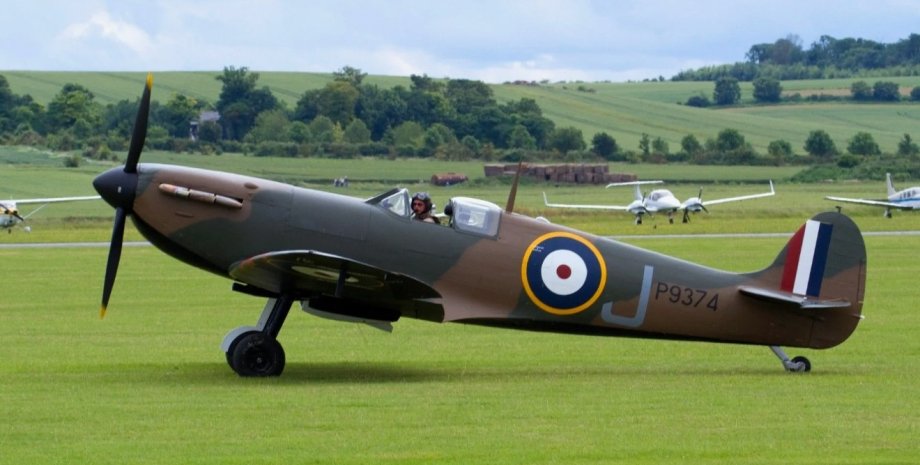
Focus has translated the article by American journalist Peter Suchu about the role of the British Supermarine Spitfire aircraft during World War II. The amazing role of Spitfayra in World War II: more than just a fighter except for the "flying fortress" B-17, no other World War II aircraft gained as popular as Supermarine Spitfire. Royal Air Force and pilots of other Allies used this single fighter of British production before, during and after the Second World War.
In addition, it was the only British fighter that was constantly produced throughout the conflict. Although many Spitfire options with different wing configurations were built, in the mid-1930s, R. J. Mitchell, the Chief Designer of Supermarine Aviation Works in Southampton, developed it as a low-range interceptor. Seafire is the adaptation of Spitfire for aircraft carriers, which came into service in 1942.
However, the idea of taking on the aircraft carrier version seemed to the Admiraltheist in a controversial before the war. One of the factors was that the priority should be given to the production of "spitfires" of land base. The concept received a second breath after the Battle of Britain and spilled into the first party of about 140 Seafire MK ib aircraft. The name is a cut from Sea Spitfire. Today, the name of the aircraft sounds legendary, but instead it was almost called "Shrew".
The Ministry of Air Force has introduced a Vicker-Armstrong companies a list of possible names for a new aircraft, which was developed under the code name of Type 300. Among the options that Mitchell preferred, were "Shrew" and "Scarab", but at Sir Robert McLene, then director of the company then director of the company. Vicker-Armstrong, there was another idea.
Although the word "spitfire", which comes from the Elizabetin times, meant "a man with a fierce luck," in fact it was a domestic nickname of older daughter McLene Annie Penrose, which he called "a little thorn. " This name was unofficially used for an earlier project of Mitchell F7/30 Type 224, but despite this, the designer said that "Spetfaire" is "such a loose meaningless name that they could not choose.
" Today, Spitfire is associated with the battle for Britain, but in fact Hawker Hurricane knocked down more enemy aircraft during the campaign. One of the reasons why people think that "Spitfires" were so numerous in the early stages of World War II, may be related to the 1968 movie "Battle of Britain. " Much more "Spetfires" were available for shooting, and only a few scenes were shown Hawker Hurricane. As a result, many now believe that Spitfire was a dominant fighter of that time.
However, despite the fact that Spitfire was not used so often, he deserved the respect of the Germans. One of the movie scenes shows a real conversation with Luftwaffe Adolf Gallanda Pilot with German Ginger, the head of Luftwaffe. Gering, upset that the battle is not in favor of Germany, asked the commanders of their squadron that they needed to win. Galland answered the famous phrase: "I would like to get a whole detachment" Spitfires ".
During the Second World War, pilots of many countries flew on the aircraft: Polish, French, Norwegian, Czech and other" free "pilots were flying at the helm. The fact that more than 600 "Spitfayers" during the Second World War piloted the US Air Force, but Yankees flew on these aircraft before America's accession.
Group VIII of the Fighter Command, was formed in 1942 from the remnants of American volunteer formations of RAF, the so-called "eagle squadron", and throughout the war they flew mostly on "Spetfyrah". Adding to 3000 Hawker Hurricane. It was difficult for anti-aircraft to distinguish a streamlined silhouette of the British fighter from the German BF-109, especially from later MK. LF IX Spitfire with square extremities of wings.
Attempts were made more clearly to mark the "Spetfayers" with large and bright emblems, including red stars, but this did not give the proper effect. As a result, the planes were bred into relatively calm southern regions of Russia. After planting on the day "D" several inventive pilots Spitfire MK IX reworked bombing on the wings of their planes so that they could carry beer barrels. These "beer bombs" provided allied troops in Normandy with long -awaited chilled beer from heaven.
Spitfire was one of the first aircraft from the chassis that was a problem for some pilots who forgot to clean the chassis during the landing. Spitfire made the first flight on March 5, 1936 and arrived RAF two years later, and in 1955 was finally removed from weapons. It was the only aircraft of the Allies, which was built throughout the Second World War - a total of 20 351 specimens were built.
Today, less than 250 aircraft (actual number varies depending on the source) are preserved, and less than 50 of them are suitable for flights, including 30 in the United Kingdom. Actor Brad Pitt is one of the private collectors who own one of the working aircraft, for which he reported, he paid $ 4 million after the shooting of the movie "Furious". Peter Suchyu is a journalist from Michigan.










All rights reserved IN-Ukraine.info - 2022